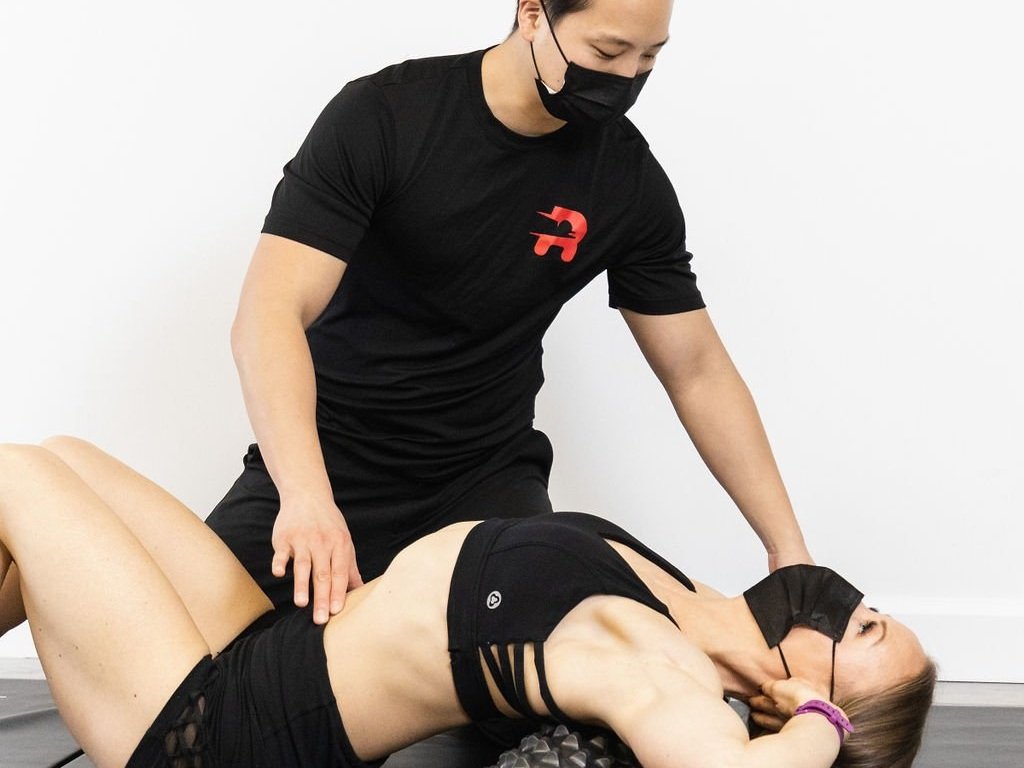What are shin splints?
How the tibialis anterior can cause shin pain
Learn about this overuse condition of the shin
What are Shin Splints?
Shin splits refer to overuse conditions of the lower leg. There are two types of shin splints - Anterior Shin Splints and Posterior Shin Splints. Each type of shin splint is managed differently due to the different muscles that they affect. For the purposes of this blog post, we’ll be focusing on Anterior Shin Splints
Anterior shin splints are an exercise induced injury to the muscles along the front of your shin. The muscles that are affected by this condition are the tibialis anterior, extensor hallucis longus, and extensor digitorum longus. All of these muscles function to dorsiflex the foot (approximates the top of your foot to the shin). Pain from this injury typically occurs during down-hill running, heel striking, and/or over-striding.
What causes shin splints?
Shin splints are the result of repetitive overuse microtrauma to the muscles of the anterior compartment of the shin. Overuse can occur with poor running mechanics or with a rapid increase in running volume or frequency. Microtrauma can cause local inflammation or stress reaction to the muscles, fascia, or periosteum leading to pain. Typically overuse injuries tend to occur when exercise progression exceeds exercise recovery. Overuse may also occur more easily with inefficient running mechanics or improper footwear.
Who gets affected the most by shin splints?
Demographic studies reveal that shin splints are responsible for 12-18% of running injuries. Of those that are injured, ages range from 18-50 years old. This injury also affects females more than males.
This condition is considered to be multifactorial, which risk factors including leg length discrepancies, tibial torsion, low calcium intake, improper footwear, hard training surfaces, and biomechanical deficiencies in the foot, ankle and hip.
What do shin splints feel like?
Shin splint pain present as a gradual dull ache along the front of the shin. This pain occurs with a rapid increase in exercise intensity or volume. Pain is present at the beginning and at the end of exercise, and may last for 2-3 days. Shin splints tend to feel better with rest and light stretching. Generally the muscles of the shin will also be tender to touch.
Which treatments help to improve shin splints?
Massage Therapy: Massage therapy can be used to alleviate pain and improve range of motion for the shin muscles. Techniques such as ischemic compression, myofascial release, trigger point therapy may be used during a deep tissue massage or sports massage. Instrument assisted soft tissue therapy using scrapping techniques can be used to provide additional benefits such as improved collagen production and tendon remodeling.
Electroacupuncture: Electroacupuncture can be used to improve local blood flow, growth hormone release, and to decrease pain.
Chiropractic: Joint mobilization or manipulation may be used to treat compensating structures or areas of hypomobility. This takes an indirect approach to treat biomechanical deficits that may have contributed to this overuse injury. Osseous joint mobilizations or manipulations may be used for the joints of the ankle or foot to improve ankle dorsiflexion, ankle plantar flexion, inversion and eversion. Qualified chiropractors may also use modalities such as electroacupuncture, shockwave, low level laser therapy, sports massage, and scrapping if required.
Physiotherapy: Sports massage may be used in combination with acupuncture, shockwave, cold laser, or instrument assisted soft tissue therapy to improve tissue compliance. These modalities will be combined with exercise rehabilitation to improve your muscle’s capacity to handle training volume, and to correct any movement pattern dysfunctions.
Exercise Rehabilitation: At Rehab Hero all massage therapists, physiotherapists, and chiropractors are qualified to show you corrective and strengthening exercises for shin splints. This is used to create long lasting changes to your body to decrease pain and increase function.
Which exercises are used for recovering from shin splints?
Exercises will generally be focused on improving ankle dorsiflexion strength and on correcting running gait. Since running form correction is individual specific this blog post will focus on exercises that improve ankle dorsiflexion muscular endurance.
Heel Walk
Seated Band Toes Raises
Kettlebell Toe Raises
For personal medical advice on how to improve your running mechanics you can book in an appointment with a sports physiotherapist or chiropractor near you. To book in an appointment with a chiropractor or physiotherapist in Markham at the Rehab Hero clinic click the button below:
For more information on shin splints you can watch this short YouTube video:
Here is another video by Markham chiropractor Dr. David Song about how to recover from anterior shin splints:
Written By:
Dr. David Song, Chiropractor, Rehab Coach





























